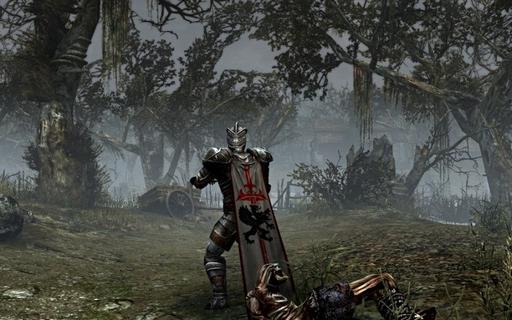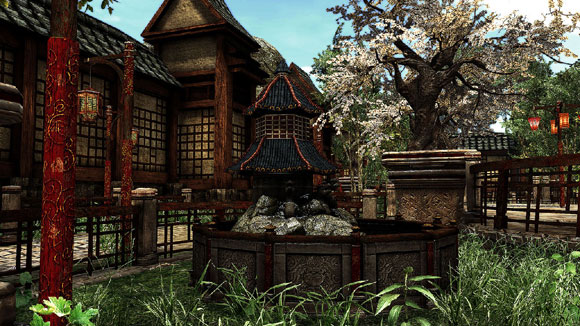Meta:Impressions: Two Worlds II @ PAX
This Preview summary was posted to the website Joystiq by Justin McElroy on March 30 2010.[1]
Impressions[edit | edit source]
I rush back to the PAX East press room, locked in that strange place between disbelief and acceptance, nigh incapacitated by the surreal certainty that my worldview is in the process of being fundamentally shifted.
"Guys," I say to the collected Joystiq staffers fully expecting my verbal evisceration of TopWare's follow-up. "Guys ... Two Worlds II actually looks kind of cool."
They don't believe me.
I'd anticipated this denial from my co-workers, of course. Reactions to the first Two Worlds, a clunky, oft-broken mess of an open-world action RPG, ran the gamut from tepid to the kind of vicious, public verbal slayings usually frowned on in polite society. Heck, one hour prior, I was squarely in this camp.
In the dim lights and comfortable seating of a makeshift room, TopWare Interactive PR man Jake DiGennaro leads off the presentation the only way he can: by admitting Two World's many failings.
"It had a number of issues, more specifically on the Xbox than on the PC. As the demo goes on, I gradually lose track of my well-earned cynicism. PC was a little bit smoother and had less framerate problems and issues with the UI -- stuff like that. At the same time, there were a lot of problems with the game," DiGennaro says.
I snicker to myself. While he's not going nearly far enough, it's rare to hear PR folk ever admit to failure, typically chalking up flaws to the game not getting a fair shake in the press or rushed development, et cetera, et cetera, et cetera.
Once the game loads and our custom-made hero is thrust into a dank yet artfully lit dungeon, my snickers stop. The walls of the dungeon look rough and hand-cut, lit by torches throwing off not only an eerie yellow light but slight heat distortion. I'm instantly absorbed.
I'm confused by my reaction, but I cling to my preconceptions, assuming that I'm getting kicked in the crotch with pillow shoes, which is almost fun if you were expecting a steel-toed boot.
But as the demo goes on, I gradually lose track of my well-earned cynicism. Here there's a cool option to let you pace around during conversations; and there, there are well-done animations of something as simple as the lead character's sleeves; and over here is a heavily-detailed city with a tasteful Oriental influence. Everywhere I look, there's evidence not only of passion and care, but the potential for quality.
I'm put over the edge by the stupidly versatile magic system that Polish dev Reality Pump has created. Not only can you augment certain spells through a card-based system to improve their damage, ability to ricochet, etc., you can also combine two wholly different spells as you grow more powerful. DiGennaro demonstrates this by crafting a spell that creates four ricocheting bolts of ice, and then instantly summons a couple of orc-like minions to serve him. It's patently insane -- there are reportedly 1026 different spell combinations -- but the 4-year-old in me can't shake the image of a lightning bolt that freezes people.
Sure, I see the problems, both potential and actual. I see how that magic system could be astoundingly confusing without a proper tutorial. I see the combat, or rather, I didn't see much of the combat that DiGennaro seems reluctant to preview at the moment. I see plenty of animations that are still stilted and fake.
But those very real hesitations are drowned out in my brain by the din of this one phrase in a constant, booming loop: "You're going to have to explain to people why you're interested in Two Worlds II."
Back at the table, my co-workers hear all this, smile for a moment at my commitment to my joke, and return to their own work. I briefly consider another round of evangelizing, but think better of it.
An hour ago, I wouldn't have believed me either.

